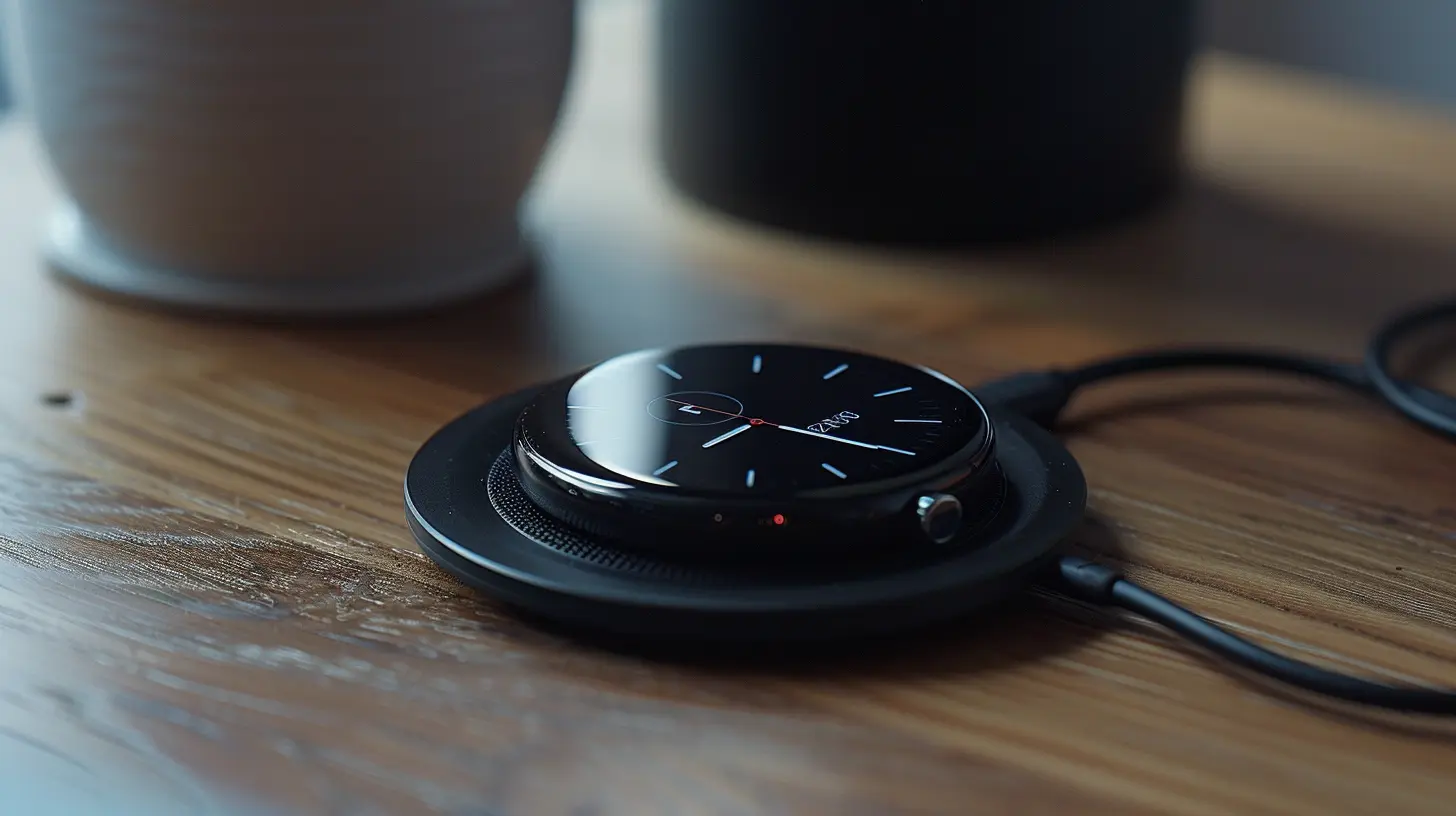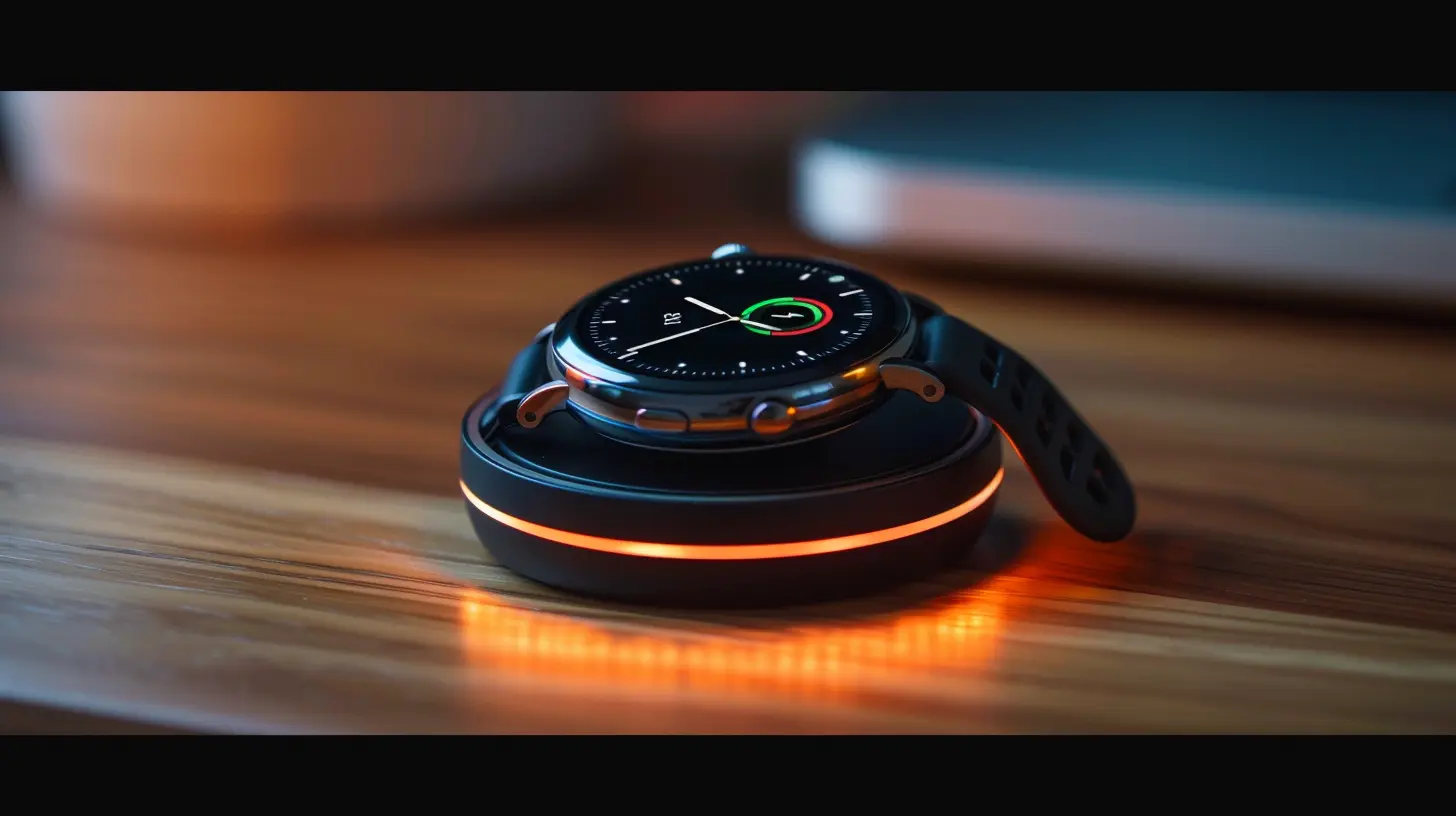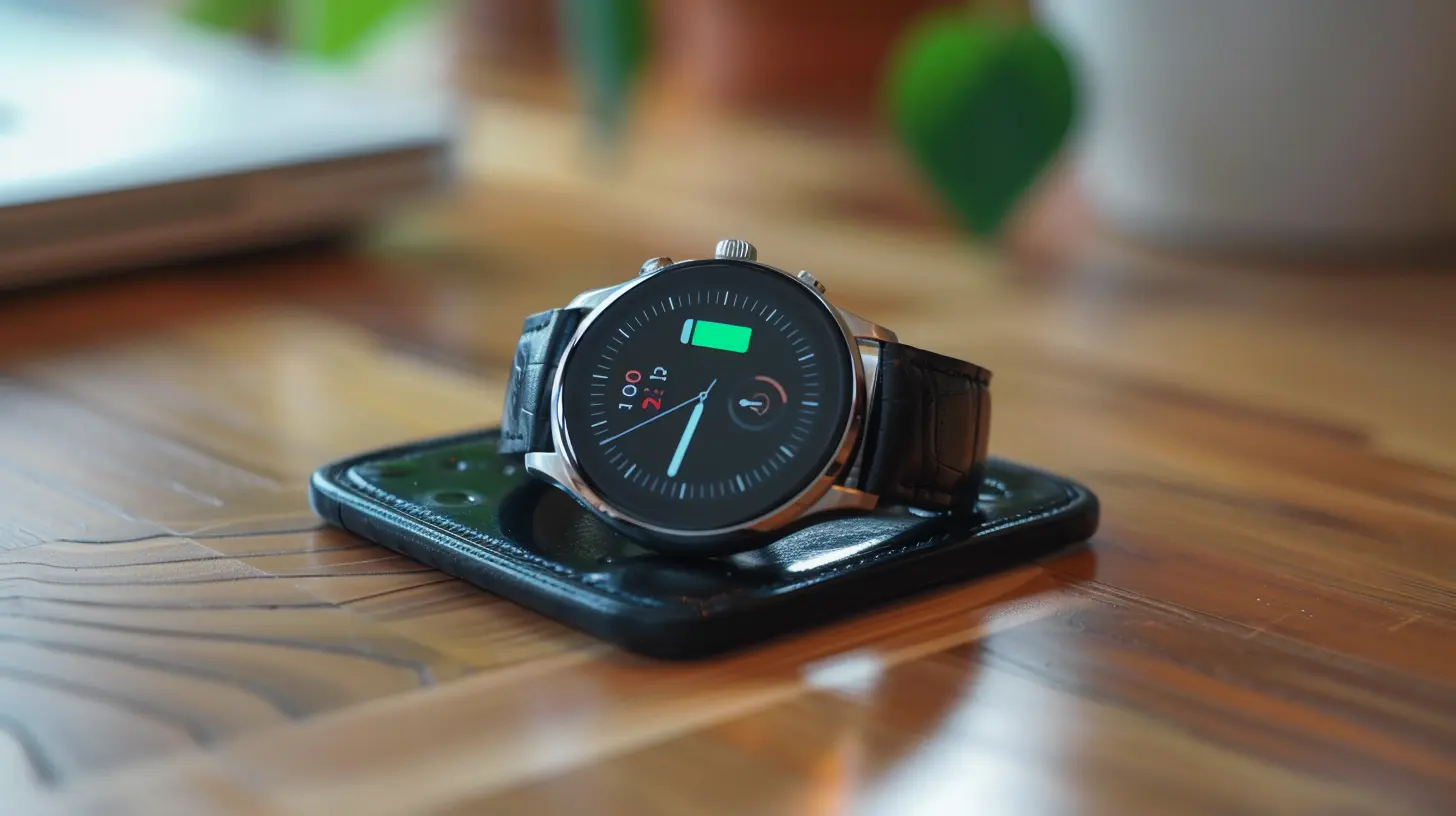16 April 2025
Smartwatches have become an essential part of our daily lives, helping us stay connected, track our fitness, and even monitor our health. But, let's be honest—charging them can be a hassle. That's where wireless charging comes in! Imagine tossing your smartwatch onto a pad without fumbling with cables and connectors. Sounds convenient, right? Well, it's not always that simple.
Wireless charging has been around for years, yet it's still not as universal as we'd hope—especially for smartwatches. If you're curious about how it works, its pros and cons, and what the future holds, you're in the right place. Let’s break it all down. 
How Does Wireless Charging Work?
Before we jump into the specifics of charging smartwatches, let's get a quick understanding of how wireless charging actually works.Most wireless charging tech relies on inductive charging, which uses electromagnetic fields to transfer power between two coils—one inside the charger and the other inside your smartwatch. When placed on a charging pad, electrical energy moves through these coils, refueling your device without the need for physical connectors.
Sounds futuristic? It’s actually a well-established technology and is used in everything from smartphones to electric toothbrushes. But wireless charging isn't always perfect, especially when it comes to wearables. 
Why Don’t All Smartwatches Use Wireless Charging?
Wouldn't it be great if every smartwatch supported wireless charging? Unfortunately, that's not the case. Unlike smartphones, which have mostly adopted universal standards like Qi wireless charging, smartwatches face a few hurdles.1. Size and Design Constraints
Smartwatches are small, and manufacturers have to pack a lot of tech into a tiny space—batteries, sensors, processors, and displays all fight for real estate. Adding a wireless charging coil without making the watch bulky can be a challenge.2. Metal Interference
Wireless charging works best with plastic or glass backs, but many smartwatches are made from metal, which can interfere with electromagnetic charging. This is one reason why not all wearables support standard charging pads.3. Different Charging Standards
While smartphones mostly use Qi charging, smartwatches are all over the place. Apple has its own proprietary magnetic charger, Samsung uses something similar, and Fitbit? Well, they’ve got their own thing going too. Because of this fragmentation, you often can’t just grab any wireless charger and expect it to work with your smartwatch.4. Charging Efficiency
Wireless charging isn’t as efficient as plugging in a cable. Some energy is lost as heat, making the process slower. For a gadget like a smartwatch—already limited by battery size—efficiency is crucial. If wireless charging takes too long or drains more power, it’s not always worth it.
Pros and Cons of Wireless Charging for Smartwatches
So, is wireless charging a game-changer or just another tech gimmick? Let’s weigh the pros and cons.✅ Pros
- Convenience – No need to fiddle with tiny connectors. Just place your watch on a charging pad, and you’re good to go.- Less Wear and Tear – No charging port means fewer chances of damage from repeated plugging and unplugging.
- More Sealed Designs – Without a charging port, smartwatches can have better water and dust resistance.
❌ Cons
- Slow Charging – Wireless charging is often slower compared to wired charging, which can be frustrating if you're in a hurry.- Compatibility Issues – Different brands use different charging methods, making it hard to find a universal solution.
- Energy Loss – Wireless charging isn't as efficient, meaning a portion of energy is lost, often in the form of heat.

Which Smartwatches Support Wireless Charging?
If you’re thinking about buying a smartwatch with wireless charging, here are some of the popular options:1. Apple Watch
Apple’s smartwatches use a magnetic charging puck that looks wireless, but it’s actually proprietary. The watch connects to the charger through a type of inductive charging. However, it’s not compatible with standard Qi chargers, which is a bit of a letdown.2. Samsung Galaxy Watch Series
Samsung has integrated wireless charging into many of its Galaxy Watches, using the WPC standard (similar to Qi, but not identical). Some models even support reverse wireless charging, meaning you can charge them using the back of a compatible Samsung smartphone.3. Google Pixel Watch
The Pixel Watch also features proprietary wireless charging, but—just like Apple—it won’t work with standard Qi chargers.4. Other Brands (Fitbit, Garmin, etc.)
Most Fitbit and Garmin smartwatches still rely on proprietary magnetic chargers rather than universal wireless charging. While they offer some level of convenience, you’ll still need to use their specific charging docks.The Future of Wireless Charging in Smartwatches
So, where do we go from here? Wireless charging for smartwatches is improving, but there’s still room for growth.1. True Qi Compatibility
If smartwatch makers adopted true Qi wireless charging, you could use the same charger for your phone and watch. Some brands are already heading in that direction, but there’s still a long way to go.2. Longer Battery Life
One of the biggest complaints about smartwatches is battery life. If battery tech improves, slower wireless charging won't be as much of an issue since you won’t need to charge your watch as often.3. Over-the-Air Charging
Imagine your smartwatch charging without even needing a pad—just by being in the same room as a charging hub! Companies are already working on long-distance wireless charging, and while we’re not there yet, the future looks promising.4. More Standardization
Samsung and Apple control much of the smartwatch market, so if they align their charging standards, others are likely to follow. If Qi becomes the norm across all brands, it’ll make things significantly easier for users.Final Thoughts
Wireless charging in smartwatches is undeniably convenient, but it’s not perfect—yet. The fragmented standards, slower charging speeds, and inefficiencies make it less ideal than it should be. But with tech advancements on the horizon, we could soon see a future where charging your smartwatch wirelessly is just as reliable and fast as plugging in a cable.For now, if you’re in the market for a smartwatch, consider whether wireless charging is a dealbreaker for you. If convenience matters more than speed, it might be perfect. Otherwise, you might want to stick with the good old-fashioned cable—at least until the technology catches up.
Wouldn't it be nice if one day, smartwatches just charged themselves? Maybe that day isn’t too far off.




Pia McElroy
This article offers insightful points on wireless charging for smartwatches. It highlights both the convenience and limitations of the technology, prompting readers to weigh practicality against battery life considerations.
April 18, 2025 at 5:03 AM